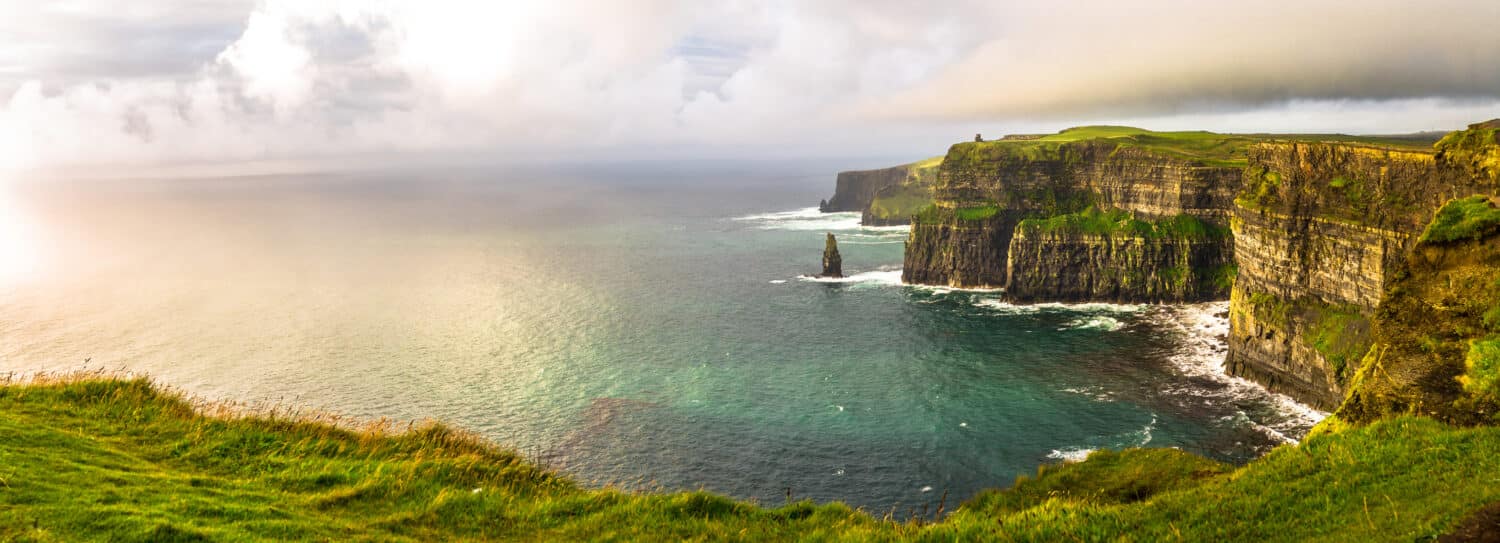Ireland, also known as the Emerald Isle, is a country famous for its stunning landscapes, rich cultural heritage, and friendly locals. Whether you’re exploring ancient castles, drinking a pint of Guinness in a cozy pub or hiking along the country’s rugged coastlines, the country’s weather can greatly influence your experience.
To make the most of your visit, it is essential to choose the right time to go. In this guide, we’ll explore the best time to visit Ireland for ideal weather, the wildlife you can find there and tips to make the most of your trip.
Ireland’s Climate
Ireland has a unique blend of maritime influences, mild temperatures, and ever-present rainfall. Understanding the climate of the country is key before planning a visit.
The Maritime Influence
Ireland’s climate is heavily influenced by its location in the North Atlantic Ocean. Thus, this results in a maritime climate that has a significant role in shaping the island’s weather patterns.
Mild Winters, Cool Summers
Ireland’s winters are relatively mild compared to other countries at similar latitudes. Average temperatures during the coldest months, which are December to February, range from 4°C to 8°C (39°F to 46°F); meanwhile, coastal areas experiencing milder conditions.
Summers, which go from June to August in Ireland, are cool and pleasant. Daytime temperatures range from 15°C to 20°C (59°F to 68°F), rarely exceeding 25°C (77°F). This moderation to warm temperatures is due to the influence of the Atlantic Ocean, which keeps temperatures in check.
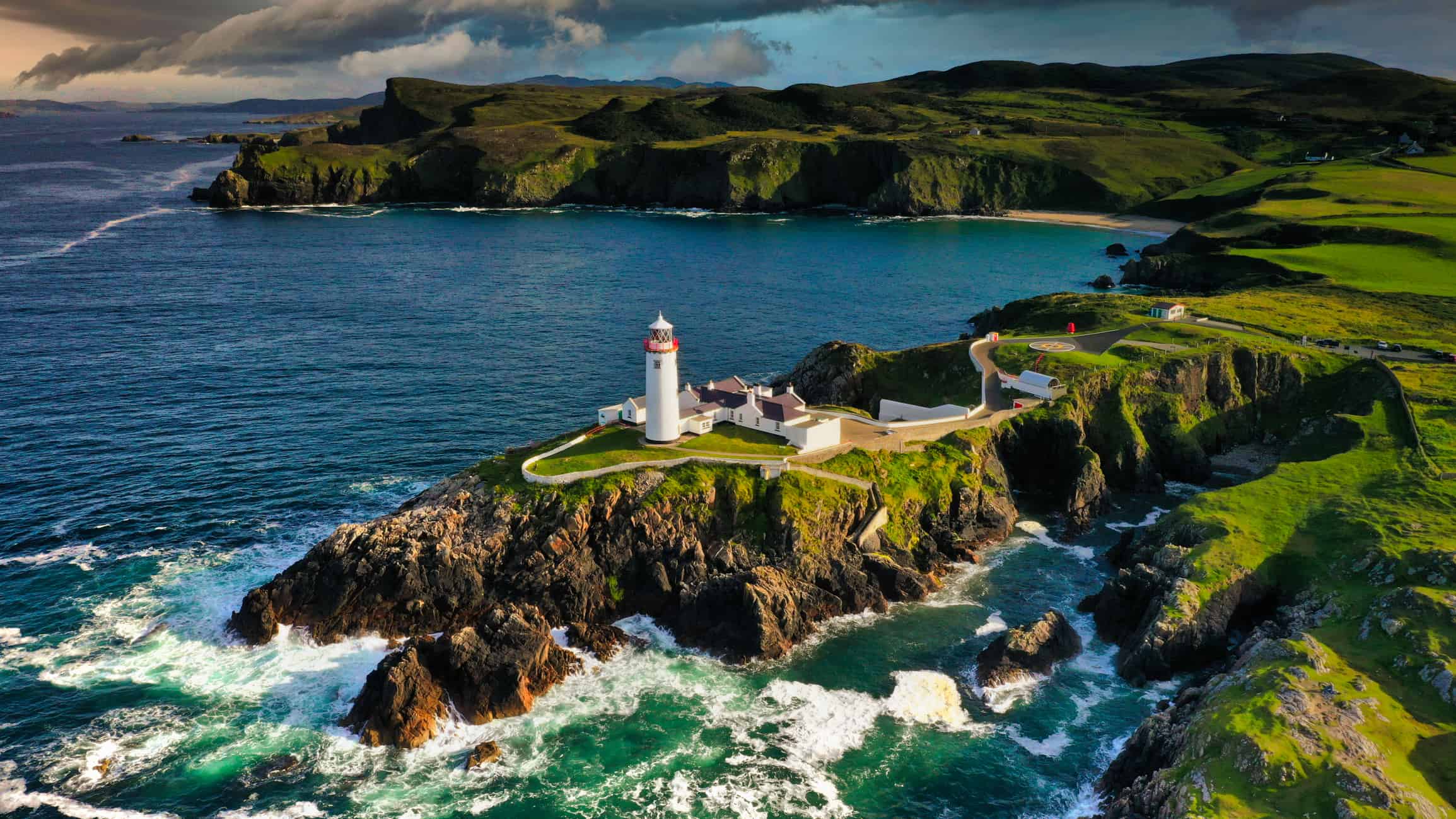
Fanad Head Lighthouse Ireland
©Ed Jackson/iStock via Getty Images
Rainfall Patterns
Rainfall is a defining feature of Ireland’s climate, earning it the nickname “Emerald Isle” because of the lush, green landscapes it creates. Ireland experiences rainfall throughout the year, with no dry season. Annual rainfall averages range from 750 to 1,500 millimeters (30 to 59 inches) across the country. However, this rainfall is not even. The western and northern coasts receive the highest rainfall, while the eastern and inland areas are comparatively drier. The south falls somewhere in between.
Sunshine and Cloud Cover
Sunlit hours in Ireland can be limited, because of frequent cloud cover. However, the country still enjoys some sunny days.
Nevertheless, Ireland is known for its overcast skies, especially during the cooler months. While cloud cover can reduce sunlit hours, it varies by region. Summers typically have lots of sunshine, longer daylight hours and brighter skies, making it the ideal time for outdoor exploration.
Wind and Storms
Ireland’s proximity to the North Atlantic Oceans means it is also prone to strong winds and occasional storms.
Ireland experiences a significant amount of wind, especially along its western coastal regions. The prevailing westerly winds can bring fresh sea breezes. While not as prone to hurricanes as some other regions, Ireland can still experience winter storms and Atlantic depressions. These systems can bring heavy rainfall as well as strong winds.
Microclimates and Regional Differences
As mentioned earlier, Ireland’s climate is not uniform across the country. Microclimates and regional variations can significantly impact weather conditions where you go.
Upland and mountainous regions, such as the Wicklow Mountains and Mourne Mountains, tend to be cooler and wetter than lowland areas. Meanwhile, coastal areas benefit from the moderating influence of the sea, resulting in milder temperatures but also more precipitation. Eastern and southeastern areas tend to be drier and experience slightly warmer temperatures compared to the western and northern coasts.
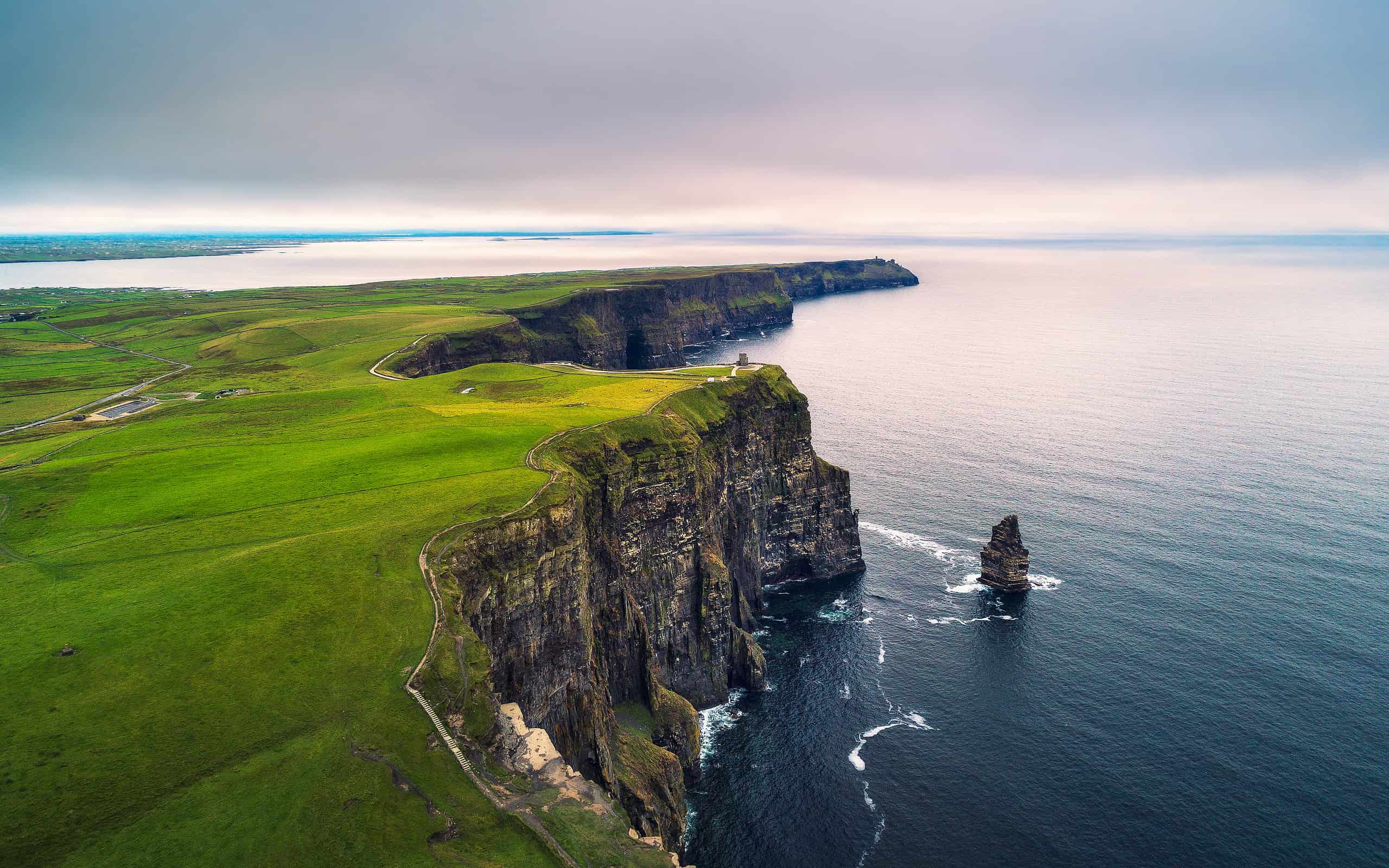
Aerial view of the scenic Cliffs of Moher in Ireland. This popular tourist attraction is situated in County Clare along the Wild Atlantic Way.
©miroslav_1/iStock via Getty Images
Average Temperatures
To help you plan your visit, here are the average temperatures you can expect in Ireland throughout the year:
Spring (March to May)
Average daytime temperatures range from 8°C to 12°C (46°F to 54°F). Spring is a time when the countryside blooms with vibrant greenery.
Summer (June to August)
Average daytime temperatures range from 15°C to 20°C (59°F to 68°F). While summer is generally the warmest time, it rarely gets hot, making sure you can explore the outdoors comfortably.
Autumn (September to November)
Average daytime temperatures range from 13°C to 17°C (55°F to 63°F).
Winter (December to February)
Average daytime temperatures range from 4°C to 8°C (39°F to 46°F). Winters are cool but rarely frigid; places can experience occasional frost and light snowfall in some regions.

Ruins of Three Castle Head, County Cork, Ireland
©e55evu/iStock via Getty Images
Natural Disasters in Ireland
Ireland is not prone to severe natural disasters, such as hurricanes, earthquakes, or tsunamis, which makes it a relatively safe destination in terms of catastrophic events. However, the country does experience occasional weather-related issues like heavy rainfall and flooding, especially during the wetter months of autumn and winter. While flooding can disrupt travel plans, it is generally not a significant safety concern.
The Best Time to Visit Ireland
So, when is the best time to visit Ireland for ideal weather and to avoid any potential weather-related disruptions?
The best time to visit Ireland is between May and September.
There are several benefits to visiting Ireland during the summer seasons.
Mild and Pleasant Weather
Summer in Ireland has the warmest and most stable weather. With daytime temperatures ranging from 15°C to 20°C (59°F to 68°F), you’ll experience comfortable conditions for outdoor activities.
Longer Daylight Hours
Summer also has longer daylight hours, giving you more time to explore the stunning landscapes, historical sites, and charming towns.
Festivals and Events
Ireland hosts numerous festivals and events during the summer months, which showcase its rich culture, music, and arts. From the Galway Arts Festival to traditional music gatherings, you’ll have plenty of cultural experiences to enjoy.
Lively Atmosphere
The summer season draws more tourists and locals to explore the outdoors. Pubs and outdoor venues come alive with live music and social gatherings.
To avoid any chance of heavy rainfall and potential flooding, it is advisable to steer clear of the wetter months from November to February. While Ireland’s weather can be unpredictable at any time, visiting during the summer provides the best chance for pleasant conditions and a memorable experience.
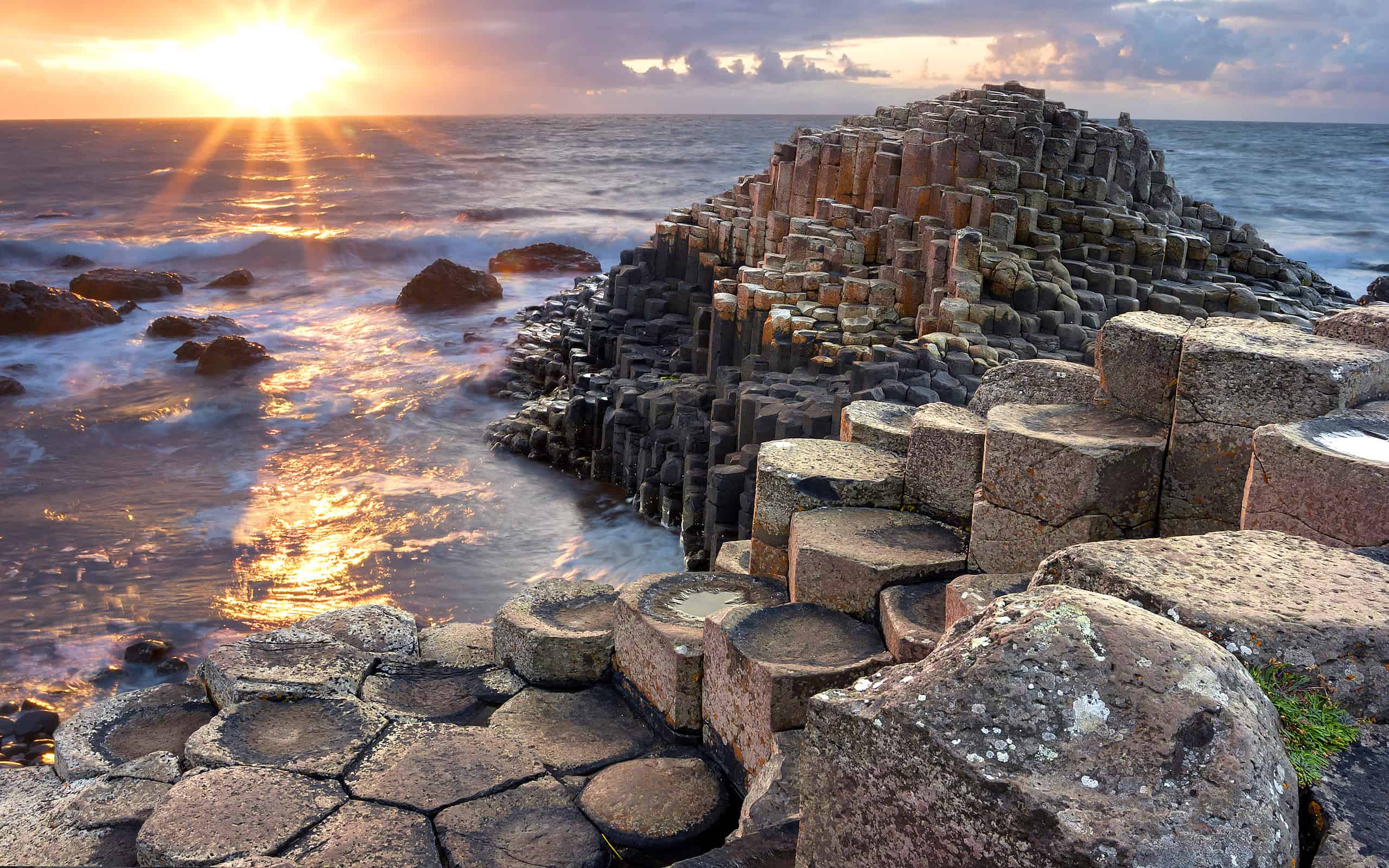
People visiting Giant s Causeway at the sunset in North Antrim, Northern Ireland
©Aitormmfoto/iStock via Getty Images
Wildlife in Ireland
Ireland’s diverse landscapes, from rolling green hills to rugged coastlines, create habitats for a variety of wildlife species. While Ireland may not have the same level of biodiversity as some other countries, it is home to a range of fascinating creatures, both native and introduced. Here’s an list of the wildlife you can encounter in Ireland:
Birds
Ireland is a paradise for birdwatchers. Some of the notable avian residents and migrants include:
Irish Red Grouse: A native species that is known for its distinctive red eyebrows and plumage. They are commonly found in upland areas.
Atlantic Puffin: These charismatic seabirds can be spotted along the coast, particularly on islands like Skellig Michael and the Saltee Islands.
Golden Eagle: A rare and majestic bird of prey that has been successfully reintroduced to certain parts of the country.
Barn Owl: Recognizable by their heart-shaped face, barn owls are often seen hunting in rural areas.
Ireland is also as a vital stopover for migratory birds, making it a hotspot for birdwatchers during migration seasons. Species like the whooper swan, barnacle goose, and many others create temporary homes in Ireland.
Mammals
While Ireland lacks large predators like wolves or bears, it is home to several mammals.
Red Deer: These creatures roam freely in national parks and upland areas.
Fox: A common sight in both rural and urban environments, foxes are highly adaptable and opportunistic.
Hedgehog: These spiky insectivores can be found in gardens and hedgerows across the country.
Irish Hare: Slightly larger and distinct from the common European hare, the Irish hare is a native species that can be found in grassy landscapes.
Badger: Known for their distinctive black and white facial markings, badgers are nocturnal and are found in the countryside.
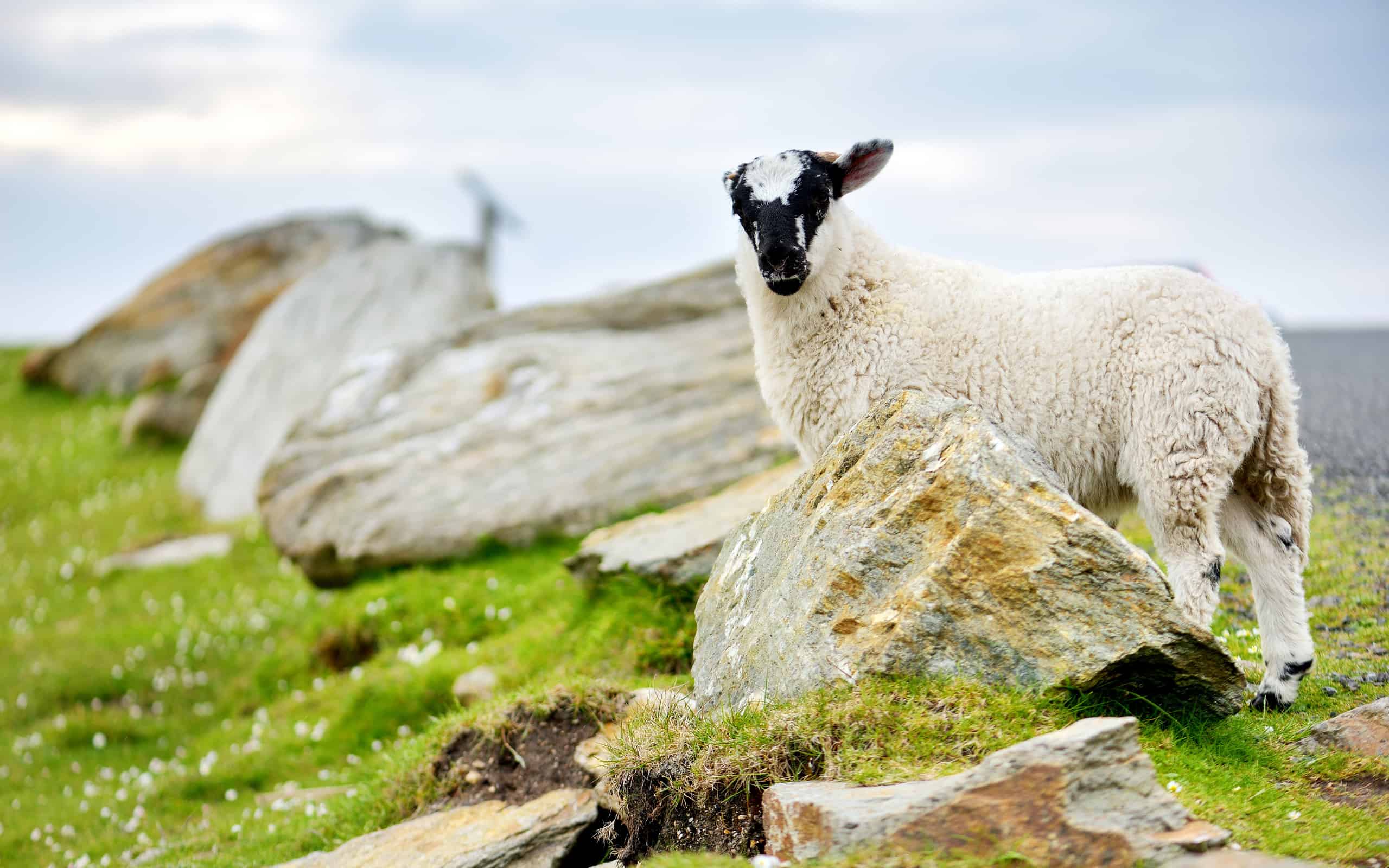
Sheep marked with colorful dye grazing in green pastures. Adult sheep and baby lambs feeding in lush green meadows of Ireland.
©MNStudio/iStock via Getty Images
Marine Life
Ireland’s extensive coastline also has rich marine life. You can spot seals, dolphins, and even the occasional basking shark along the shores. Birdwatchers may also witness gannets, guillemots, and razorbills diving to grab fish.
Amphibians and Reptiles
Ireland’s cooler climate limits the diversity of amphibians and reptiles. However, you can still encounter common frogs, smooth newts, and slow worms in suitable habitats.
Insects
Ireland is home to a wide variety of insects, including butterflies, moths, and dragonflies. Many native wildflowers also attract pollinators like bees and hoverflies.
Freshwater Life
Ireland’s rivers and lakes are home to a diverse range of freshwater species, including salmon, trout, pike, and eels.
Introduced Species
Unfortunately, Ireland has seen the introduction of non-native species over the years. Some of these species, like the grey squirrel and the mink, have had negative impacts on the native wildlife.
Conservation Efforts
Ireland has started to place significant importance on conservation efforts and protect its native species and habitats. Numerous wildlife reserves, national parks, and protected areas have been established to safeguard the country’s biodiversity.
One notable example is the Burren National Park in County Clare, home to a unique limestone landscape and a diverse array of plants and animals. Additionally, the Wild Nephin Ballycroy National Park in County Mayo has pristine wilderness and numerous endangered species.
In recent years, there have been efforts to reintroduce certain species, such as the golden eagle and red squirrel, to their native habitats in Ireland. Thus, conservation initiatives aim to preserve the country’s natural heritage for future generations.

Atmospheric, dramatic storm sky and clouds, mist and heavy rain in Irish iconic viewpoint, Ladies View. Green valley with lake. Rink of Kerry, Ireland
©Dawid Kalisinski Photography/iStock via Getty Images
Additional Tips for Your Visit
Given Ireland’s unpredictable weather, it is wise to pack layers that you can add or remove as needed. A waterproof jacket or umbrella is also essential. Make sure to prepare for occasional rainy days by having a list of indoor attractions, such as museums, galleries, and historic sites, to explore.
Summer is also the peak tourist season, so make sure to book accommodations well in advance. Ireland’s natural beauty shines the most during the summer. You have to plan trips to explore the countryside, visit national parks, and hike along coastal trails. Research local festivals and events happening during your visit so that you can fully immerse yourself in Irish culture and traditions.
In conclusion, the best time to visit Ireland for ideal weather is during the summer months, specifically between May and September. During this period, you’ll enjoy mild temperatures, longer daylight hours, and a lively atmosphere, all the while minimizing the risk of heavy rainfall and potential weather-related disruptions.
Thank you for reading! Have some feedback for us? Contact the AZ Animals editorial team.

